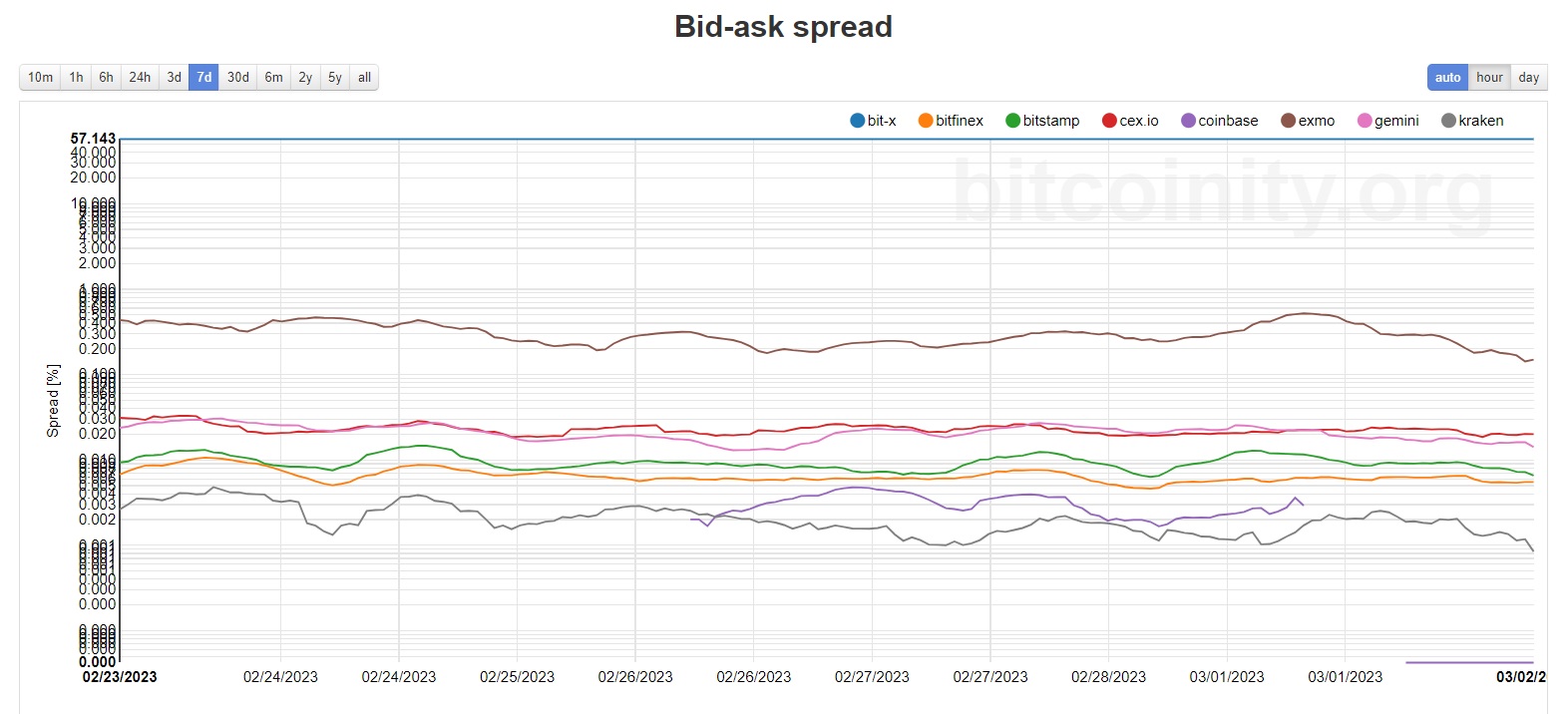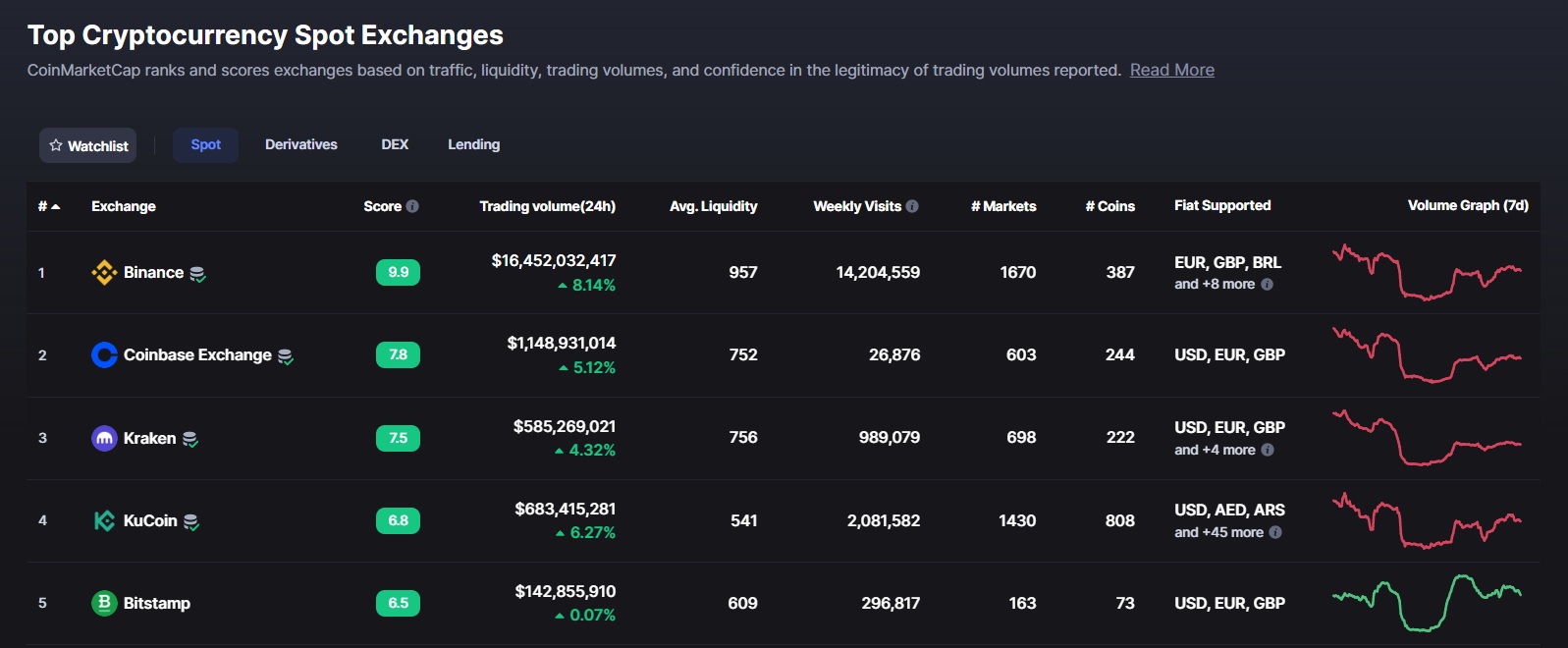Why Do Crypto Exchanges Have Different Prices?
TABLE OF CONTENTS
Cryptocurrency exchanges are one of the essential building blocks in the crypto market – investors can buy, sell, and exchange digital assets on these platforms. But, when it comes to crypto trading, the prices of an individual coin can differ from exchange to exchange. So why do Bitcoin prices vary per exchange? This article will cover some of the key reasons behind these price differences and how to take advantage of them.
How Do Crypto Exchanges Set Prices?
The prices on a crypto exchange are largely determined by the supply and demand of the overall market, and the trading activity of traders on their exchange. The crypto prices are algorithmically determined to calculate an ask and bid price for all trading pairs to match filled and unfilled orders from these buyers and sellers. There are also outside influences that can also affect Bitcoin prices such as news, government regulations, and speculation. The differences in prices give an opportunity for a strategy called crypto arbitrage trading.
Key Reasons Why Crypto Exchange Prices Differ
1. No Standard Pricing
Cryptocurrencies are decentralized in nature which means there is no central authority or entity to mandate or control the prices of cryptocurrencies. Since there is no standard or global price for cryptocurrencies, exchanges will set their own different trading prices which is the primary reason for price discrepancies across exchanges. How they set the exact price is influenced by various factors such as the type of platform, the fees, and the liquidity provided by its users.
2. Liquidity
Liquidity is a measure of how easy it is to convert any amount of crypto into cash (or other digital currencies). An exchange with much less liquidity will witness more price fluctuations than an established exchange with greater liquidity, thus, creating an unequal price difference between the two platforms. The more liquid exchanges are likely to have closer Bitcoin prices across their order books compared to illiquid exchanges.
The liquidity can have a direct result on the listed crypto pair prices due to volatility. Illiquid exchanges are more prone to price spikes than liquid exchanges. Moreover, the final trading price quoted on a low-liquidity exchange can be altered disproportionately by one big order from a high-net-worth investor. But an exchange with high liquidity will have a stable and more efficient market with fewer price fluctuations.

This can be measured by calculating the spread, or the difference between the bid (the highest price a buyer is willing to pay) and the ask (the lowest price a seller is willing to accept). An exchange that has tighter bid-ask spreads is a measure of greater liquidity, while a wider spread means a less liquid market. A website such as data.bitcoinity.org can be used to graph the ask/bid Bitcoin prices on the most popular exchanges.
3. Exchange Volume
Similar to exchange liquidity, the volume of cryptocurrency pairs processed daily by a platform can impact the listed price of its digital assets. Therefore, differences in the trading volumes across different exchanges in the marketplace will differ based on these metrics which fluctuate 24/7. Large cryptocurrency exchanges typically command higher trading volumes, which can lead to finding both “cheaper” and “more expensive” Bitcoin prices than other, smaller exchanges. The more orders are available on the exchange, the greater the chance of finding a coin at a specific price.

The inverse can be true for smaller exchanges with lower volumes. Traders might have to part with an asset at a lower price than they'd like to finalize a deal quickly. On the flip side, investors waiting for a 2-3% cheaper price on Bitcoin might have to wait a while before it becomes available.
Fundamentally, exchange volume affects crypto prices thanks to supply and demand. Exchanges with greater volume will offer have far more buy and sell opportunities at a range of prices compared to their lesser-known counterparts. Exchanges with the highest trading volume will often have the lowest fees.
4. Market Manipulation
Market manipulation can substantially alter the price of a coin across exchanges. Although this is less likely to occur with top-market-cap digital assets like Bitcoin and Ethereum, smaller altcoins are quite susceptible to the actions of “whales”.
A common method is known as the “pump and dump” scheme. Typically, high-net-worth investors will set up a massive order for an obscure coin, artificially pumping up its price. Other investors may see this jump in value and fall for the hype, pumping up the asset's price further. After a period of time, the “whale” will sell their share of the crypto at a massive profit, immediately crashing the asset's price.
Related: How to spot a crypto pump and dump.
High-net-worth investors can also set up “trade walls” on a digital currency by setting multiple buy or sell orders at the same price. This means they can keep the asset's value within a certain range that suits their trading strategy.
5. Fees Charged
Crypto exchanges charge a fee that is used to pay for their operating costs. This ranges from trading, deposit, trading, and withdrawal fees. Of all these costs, trading fees can indirectly impact the listed crypto prices. The exchange fees can increase the cost of buying or selling an asset, making it more expensive (or cheaper) to enter a position that will impact other factors such as liquidity and trading volumes. That is, traders may be hesitant to pay the additional Bitcoin transaction fee and will seek alternative ways to reduce their crypto fees and transfer their liquidity elsewhere.
6. Exchange Location
The location of an exchange can have an impact on the price of an asset due to several reasons. Largely, it's to do with timezone – a platform may receive greater volume (and thus liquidity) during that nation's normal business hours.
For example, a massive global exchange such as Binance or Coinbase will typically have a stable Bitcoin trading volume that spikes during N.Y.S.E trading hours. Conversely, an Australian exchange such as Swyftx will see the most activity during Asian and Oceanic time zones. Therefore, the price of the platform's assets may fluctuate a lot more than an international alternative during its off-peak hours.
7. Exchange Type
Crypto investors will typically come across two different types of trading platforms – centralized exchanges and brokers. The way these two platforms set prices is quite different, which can result in significant fluctuations in price between them. For example, a centralized exchange uses an order book, where the price of a coin is set by the market's active buy and sell orders. On the other hand, a broker is more like a storefront that can set its own asset prices based on whatever factors they like. Therefore a broker might be selling Bitcoin for 1-2% higher (or lower) than an exchange for reasons unrelated to the market and platform trading volume.
How Do Exchanges Calculate Crypto Prices?
Digital asset prices vary slightly across the market. Different exchanges use data from recent trades, they do not exactly set the price of cryptocurrencies. They utilize the average prices of active deals across different exchanges to determine a coin's price per time. Exchanges also use a coin's most recent bid/ask price to determine its price. This is why prices fluctuate from time to time.
Frequently Asked Questions
What role do traders play in crypto prices?
Traders can indirectly influence the listed prices on the exchange by the amount of trading volume that occurs. The higher amount of trading volume by traders will reduce the spreads and lead to more efficient pricing. Exchanges with lower volumes will have greater spreads that can result in higher prices.
What tools can be used to track and compare prices across exchanges?
There are several crypto tools that can be used to monitor cryptocurrency prices. The most common way is to use a crypto screener which integrates and monitors the pricing from several crypto exchanges in a single location.